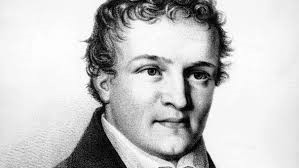
It is of great value, especially in the field of spirituality, when we explore and grasp a concept in its depth, as otherwise we are often talking at cross purposes. Someone talks about meditation, but means something different to ten other people, each of whom also has different ideas about meditation and its practice and purpose. Or of love, energy and chakras. The misunderstandings are great if we cannot clarify our terms beforehand and explain them to others.
The exercise I am about to present has a further purpose: if I explore a concept more deeply, I myself become more alive in my consciousness and move closer to the inherent content and very own sound of the word. It’s almost like cleaning a piece of furniture, removing the dust and let it shine anew in its beauty.
Let’s take the word “connection”.
You can write it on a piece of paper or on a blackboard and contemplate it quietly for a while, giving it space.
Connection
- How is this term generally used?
There is a telephone connection, a chemical connection, in technology a connection of two cables and also a train connection and a connecting road. We notice when we have a bad connection on our cell phone. So there is a side that is technical, scientific.
People also make connections, they can be happy or disastrous. In the fraternities, the concept of a “beating fraternity” has emerged. We know business and professional connections.
The word comes even closer if we describe its opposite, which would be separation, isolation, division or schism.
- A further step in this exercise is to work out the more spiritual, relational side of the word
As far as the positive aspect of the term is concerned, one can come to the conclusion that connection corresponds to a basic human need, both socially and mentally and spiritually. Connection seems to be a primal characteristic of the human soul. It could be described as the joy of being whole. The mental connection that can exist between two people and that they cultivate is also known. And other questions arise, such as whether we humans are not dependent on making connections as the basis of our learning and development. Is there a development in the separation?
The concept of connection takes on a negative side when it is an emotionally colored desire for connection. In the emotion, the individual remains on his or her own and desires a strong connection, which can then easily turn into attachment and dependence or express itself in a willful, compulsive desire to be connected. Under these circumstances, everyone’s natural need for connection can quickly become a superficial and illusionary sense of unity.
The verb from which the term originated also deserves consideration. “Connecting” is an activity, the “connection” is the result of the activity of connecting. Bringing something together, but also creating a bond – these are the first thoughts that come to mind when we hear the word “connect”. There are people and a type of language or behavior that tend to have a unifying effect, but there are also people and attitudes that tend to evoke divisive feelings. There seems to be much more hidden in “connecting”, a skill, perhaps even an art that the individual can learn.
Etymologically we find the terms “connection”, “close relationship”, “process of connecting” and in the 15th century connection meant “obligation.” In my experience, including the origin of the terms in this exercise often opens up a whole new perspective. Here, for example, we see that a few centuries ago, connection was seen less passively, but had a rather active connotation with “obligation”.
And we can take another step. Where in literature, in films, in philosophy is connection mentioned, can we perhaps find a person who has dealt with this topic or expressed it in their life’s work?
In this context, I am reminded of a scene from the film by director Werner Herzog – “Every man for himself and God against all” about the life of Kaspar Hauser.
Kaspar Hauser (1812 – 1833), who had to grow up in complete isolation and was then suddenly put out into the world, where he first had to learn to walk, speak etc., was allowed to live for a while with a family who took him in benevolently. He looks at the baby in the cradle, touches it lightly with his hand, the mother sees the gesture and presses the child into his arms, saying he can hold it for once. Kaspar Hauser is overcome by a feeling that he expresses, as tears run down his cheeks, with the words: “Mother, I am cut off from everything.”
Let us add to this scene a spiritual-scientific observation by Rudolf Steiner.
“If Kaspar Hauser had not lived and had died as he did, the contact between the earth and the spiritual world would have been completely interrupted.”
Here Rudolf Steiner speaks of a person who – his fate is well known – had to suffer unspeakable things, but who carried within him an outstanding ability to connect, and this far beyond human, social connections.
- The fulfillment of the word
A final step in our exercise, which takes us into the depths of a term, would be to work out a mental or spiritual meaning of the word under consideration. After all the previous considerations and findings, you can approach these.
I express it here with these words :
“Connection is a result of human emotional activity. It arises from an interest directed outwards, towards an object, a natural phenomenon or a person, which is accompanied by empathy. People have to establish this connection continuously and it gives them the joyful feeling of being naturally embedded in their surroundings. The individual experiences himself as a citizen of the earthly and spiritual world with a broad soul and a healthy center.”
I recommend these soul or awareness exercises to anyone who wants to become active in their consciousness. (1) Be it because there is an interest in language in general, because I want to learn better communication skills or because I want to delve deeper into a topic. Experience has shown that it is a pleasure to work through this exercise together with several people.
(1) This exercise for the soul is taken from the book “Exercises for the Soul” by the author Heinz Grill.


0 Comments